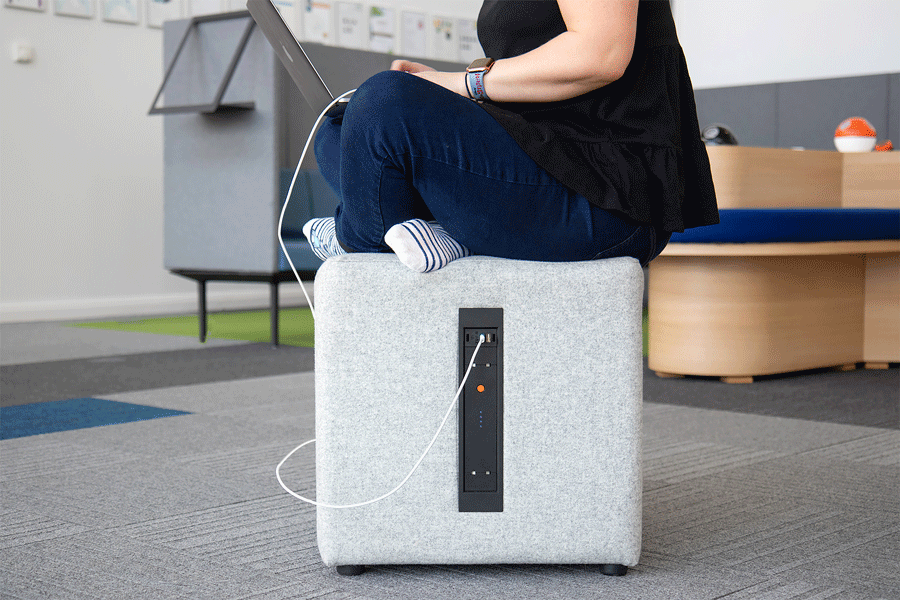
Instant messaging, cloud storage and video calls mean that people around the globe can collaborate every day. It is now possible to work anywhere with any device.
Office footfall has increased as Covid transitions into an ‘Endemic’. Yet the number of bums on seats is still low. In January, only 9% of workers had returned to the office full time and 26% part-time[1].
It is time to question: why do we go to the office? Where are we most productive? Often the answer to these questions is to have meetings and socialise with co- workers. However, many open-plan offices make meetings and socialising a challenge – especially without annoying co-workers who are trying to concentrate.
Big corporations – such as BT, PwC & Deloitte – have looked towards agile working to make the office space they have flexible. They have untethered their employees from desks. Agile offices support different types of work, with different zones.
The tethers that tied us to a desk are being cut by increasingly mobile technologies people want to be able to seek out space that best fits the activity that they are undertaking at that point. The challenge for the employer and the workplace designer is to decide what these spaces are.” Tim Oldman | British Institute of Facilities Management
“the tethers that tied us to a desk are being cut by increasingly mobile technologies"
Tim Oldman | British Institute of Facilities Management
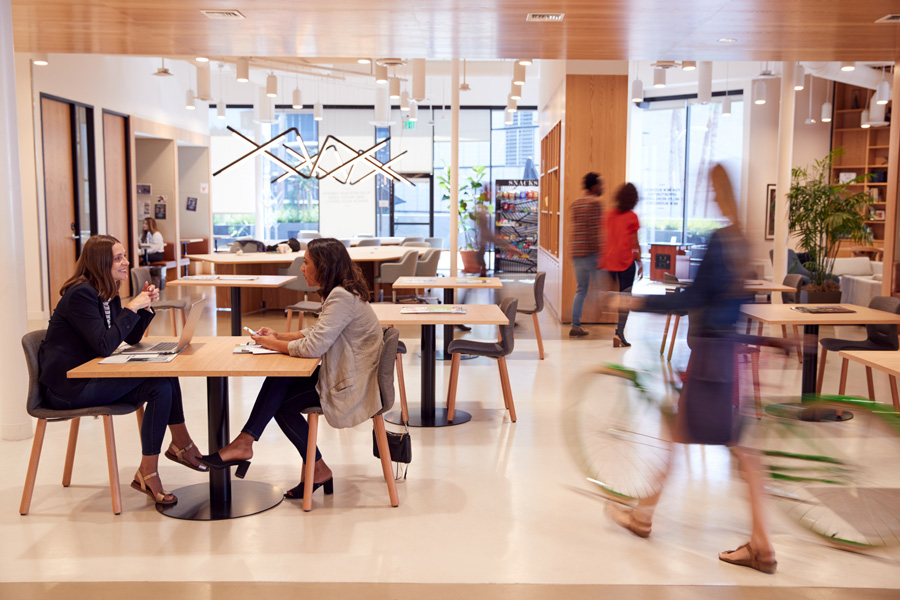
productivity
often thrives in an agile office as people can choose the best place to work for the task at hand. Teams have the correct tools to support them in group work – such as whiteboards and presentation screens. While, independent work can take place effectively without distractions.
reduces carbon footprint
in the UK alone, annual office commuting produced 19.7 million tonnes of CO2 emissions[3]. Reducing the number of days people go into the office can dramatically reduce emissions.
attracts talent
surveys show that workers are prioritising agile opportunities when looking for new roles. Businesses that compete for global – and local – talent must accommodate these needs.
increases well-being
for many, commuting to the office causes stress – especially for working parents. Agile working can improve mental health by reducing the amount of time spent commuting.
spaces for individual work
After the quiet of working from home, workers may find returning to the office noisy and distracting. However, the office can adapt to support individual focused work too.
Noise can be reduced by introducing focus booths & phone booths into the space. Research has shown that worker’s ability to focus on tasks improved by 48% when noise was reduced[4].
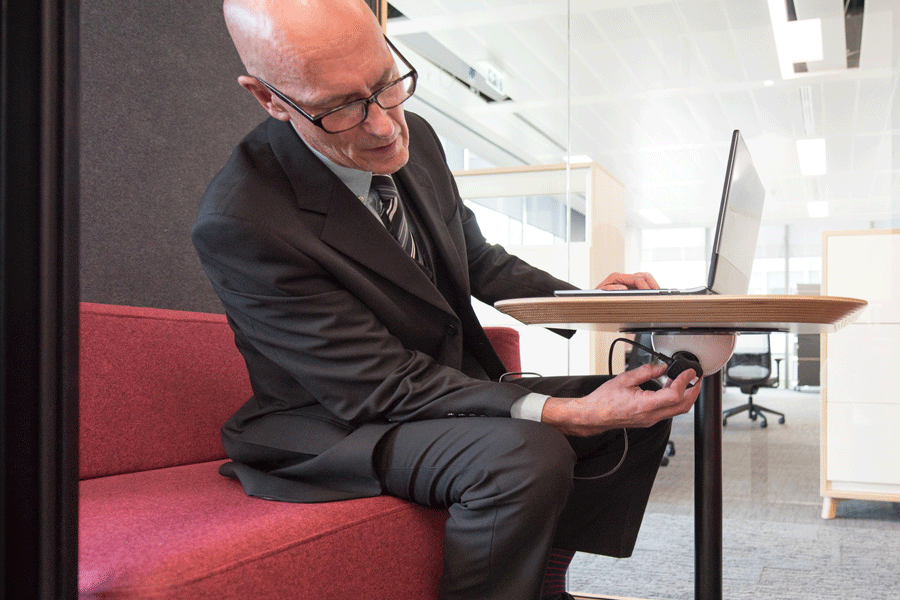
open office areas
Despite more work being collaborative, there is still the need for some of our workload to be admin-based. For mundane tasks – such as emails – it makes sense to complete these at a traditional workstation. The office may include a hot desk or assigned seating arrangement.
Some companies utilise long, extended tables to break down barriers between employees when noise was reduced[4].
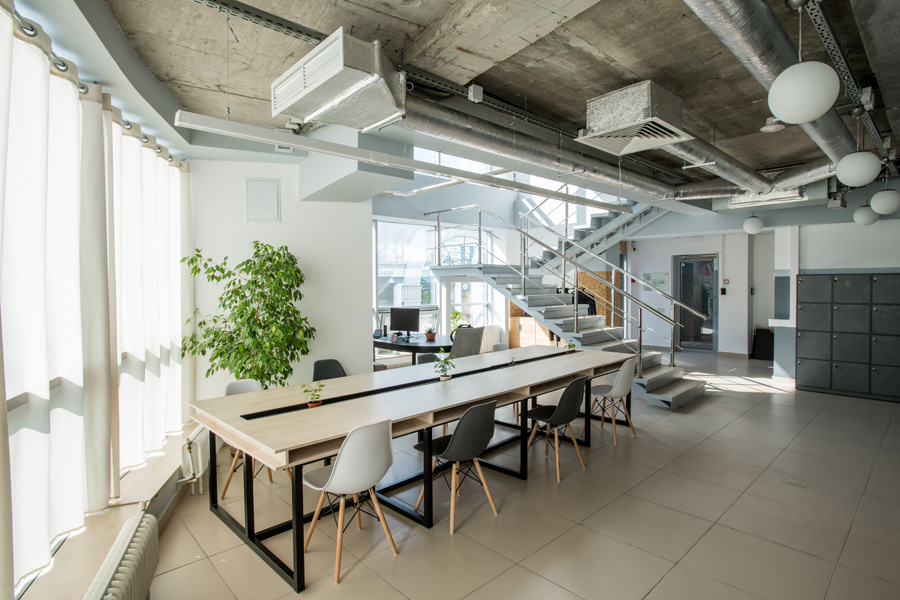
design spaces that bring people together
Agile spaces make collaboration simple. Acoustic shielding dampens sound so that teams can communicate without distracting others in the office. As virtual communication will take place, these zones should include audio & video support.
There may be a range of collaborative spaces: small and large. Smaller spaces tend to be more open – like a booth. Larger collaborative areas may be in a room. Both should offer access to hardware such as screens and whiteboards to support workers.

create a space to form tight knit bonds within teams
Employees miss the social aspect of the office. Try swapping some desk space for a company cafe or games area.
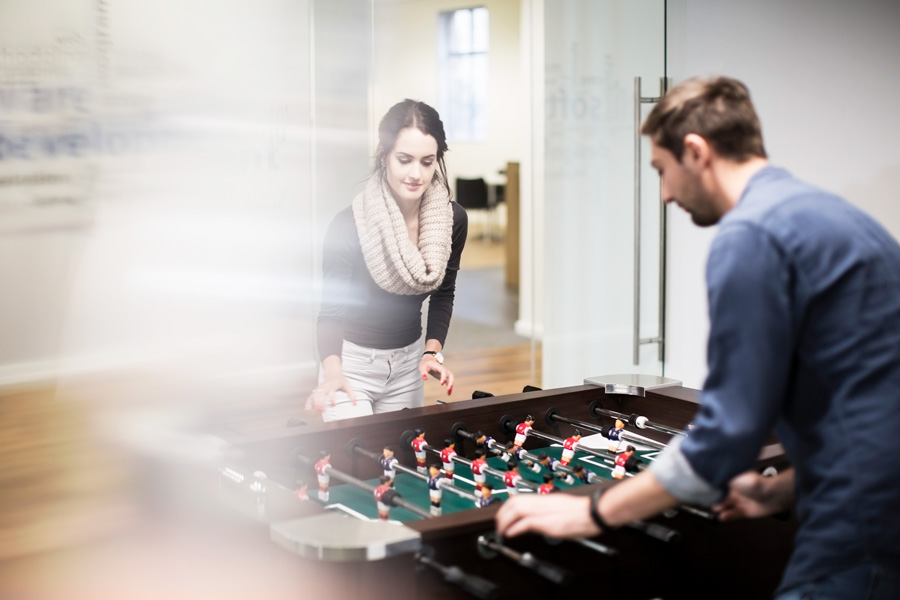
untether work effectively with battery power
If workers are to break away from workstations, they must have access to power. Without safe & convenient power, workers will find their laptops running low on battery before mid-morning.
ANIMATE by OE supports the transition to agile working flexible power: for every scenario. It is an adaptable & expandable click and connect battery power system.
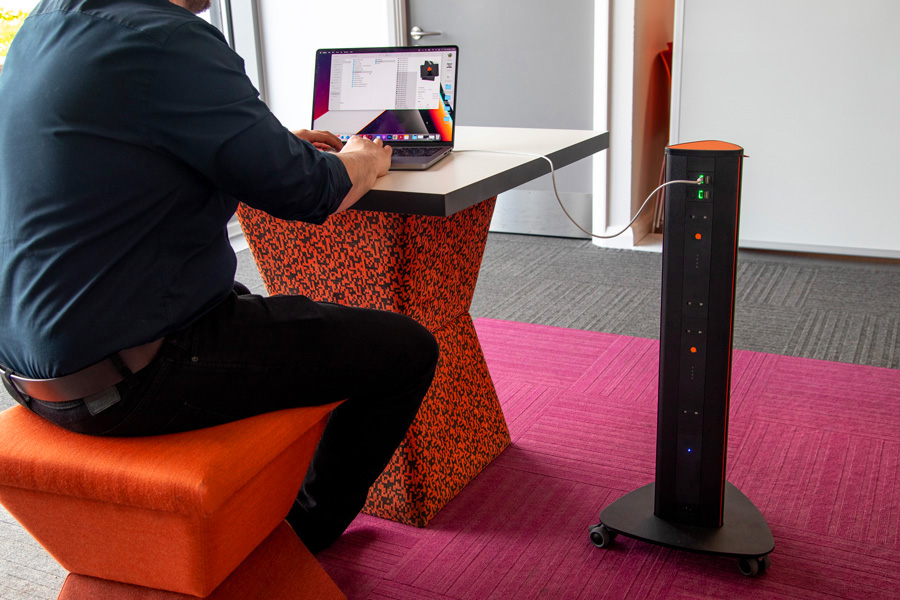
Curious as to how ANIMATE can unlock your space? Our new ANIMATE brochure demonstrates how simple it is to incorporate battery power into your project – CLICK HERE to read.
Ready to design a custom power solution with ANIMATE? Fill out the form below and our solution specialists will be in touch.
Are you looking to create a new hot desking system, or maybe you are revamping your current one? Click the button below to download this content in a PDF format.

OE House,
Calder Park,
Thomas Maddison Ln,
Durkar,
Wakefield
WF4 3GH
OE Showroom
1a Briset Street
London
EC1M 5NR
UK
| Cookie | Duration | Description |
|---|---|---|
| cookielawinfo-checkbox-analytics | 11 months | This cookie is set by GDPR Cookie Consent plugin. The cookie is used to store the user consent for the cookies in the category "Analytics". |
| cookielawinfo-checkbox-functional | 11 months | The cookie is set by GDPR cookie consent to record the user consent for the cookies in the category "Functional". |
| cookielawinfo-checkbox-necessary | 11 months | This cookie is set by GDPR Cookie Consent plugin. The cookies is used to store the user consent for the cookies in the category "Necessary". |
| cookielawinfo-checkbox-others | 11 months | This cookie is set by GDPR Cookie Consent plugin. The cookie is used to store the user consent for the cookies in the category "Other. |
| cookielawinfo-checkbox-performance | 11 months | This cookie is set by GDPR Cookie Consent plugin. The cookie is used to store the user consent for the cookies in the category "Performance". |
| viewed_cookie_policy | 11 months | The cookie is set by the GDPR Cookie Consent plugin and is used to store whether or not user has consented to the use of cookies. It does not store any personal data. |